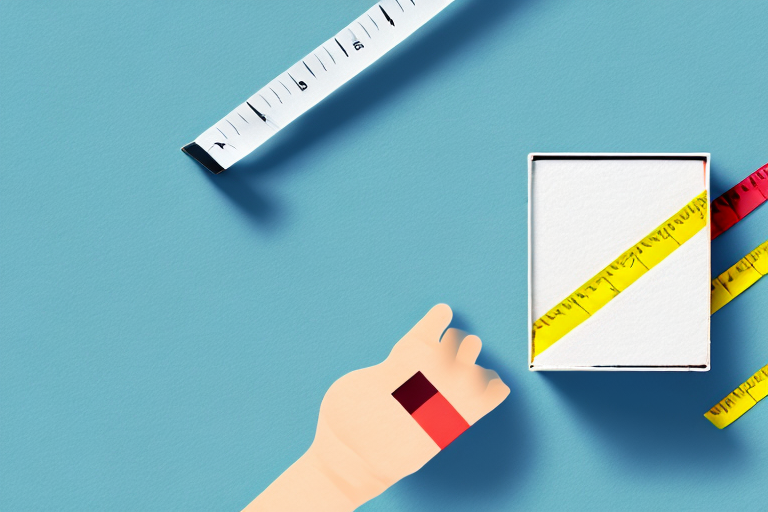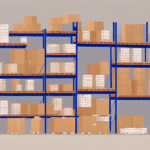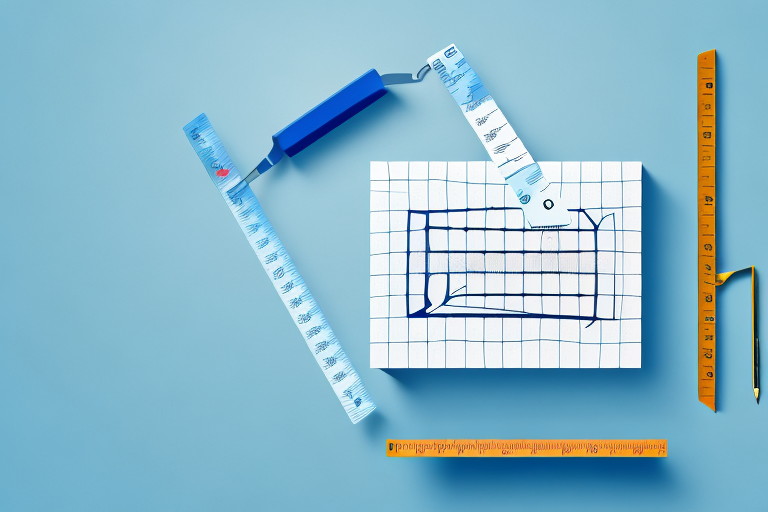The Importance of Accurate Box Measurements
Accurately measuring the dimensions of a box is essential for various reasons, including shipping, storage, safety, and inventory management. Precise measurements can help you:
- Reduce Shipping Costs: Shipping companies calculate costs based on box dimensions and weight. Accurate measurements ensure you’re not overpaying or underestimating shipping fees.
- Optimize Storage Space: Knowing the exact size of your boxes allows for efficient use of storage areas, preventing wasted space and facilitating better organization.
- Ensure Safety: Properly sized boxes are easier to handle and reduce the risk of injuries from lifting or moving excessively large or heavy packages.
- Improve Inventory Management: Precise dimensions aid in accurate labeling and tracking of inventory, making it easier to locate items when needed.
Essential Tools for Measuring Box Dimensions
To measure box dimensions accurately, you'll need the right tools. Here are the essential tools and equipment:
- Measuring Tape or Ruler: A flexible measuring tape is ideal for boxes with curved edges, while a rigid ruler works best for straight edges.
- Level: Ensures the box is sitting evenly, which is crucial for accurate measurements.
- Additional Support: For large or irregularly shaped boxes, a ladder or an extra pair of hands may be necessary to achieve precise measurements.
Choosing the appropriate measuring tool can significantly impact the accuracy of your measurements. A flexible tape allows for more versatile measuring, especially for non-standard boxes.
Step-by-Step Guide to Measuring Box Dimensions
Step 1: Measuring the Length
Begin by measuring the length along the box's longest side. Place your measuring tape or ruler at one end and extend it to the opposite end, ensuring you measure from the inside edges. Record the measurement in your preferred unit (inches or centimeters).
Step 2: Measuring the Width
Next, measure the width perpendicular to the length. Ensure the box is flat and not bulging to avoid inaccuracies. If the box is bulging, gently press it down before measuring.
Step 3: Measuring the Height
Finally, measure the height from the bottom to the top edge. The box should stand upright during this measurement to ensure precision. Avoid leaning the box, as it can distort the height measurement.
Calculating Box Volume and Its Implications
Once you have the length, width, and height, calculating the volume is straightforward:
- Formula: Volume = Length × Width × Height
For example, a box with dimensions 12 inches (length) × 8 inches (width) × 6 inches (height) has a volume of 576 cubic inches.
Consistent units of measurement are crucial. If your length is in inches, ensure the width and height are also in inches. For boxes with irregular shapes, break them down into smaller sections to calculate the volume accurately.
Determining Shipping Costs Based on Box Dimensions
Shipping costs are influenced by both the dimensions and weight of your box. Here's how to determine the cost:
- Use Shipping Calculators: Most shipping companies offer online calculators where you can input your box's dimensions and weight to get an estimate.
- Consult Shipping Guidelines: Different carriers have varying size and weight limits. Review these guidelines to choose the most cost-effective shipping method.
- Consider Dimensional Weight: Some carriers use dimensional weight pricing, which considers the size of the package relative to its actual weight.
For more detailed information on shipping costs and dimensional weight, refer to resources like the FedEx Rate Tools or the UPS Dimensional Weight Calculator.
Common Mistakes to Avoid While Measuring Box Dimensions
Ensuring accuracy requires avoiding common pitfalls:
- Measuring from the Outside: Always measure from the inside edges to get the accurate internal dimensions.
- Ignoring Box Irregularities: Handle protrusions like handles or flaps separately to avoid skewing measurements.
- Not Using a Level: An uneven box can lead to incorrect height measurements.
- Skipping Double-Checks: Always re-measure to confirm accuracy.
Choosing the Right Box for Shipping and Storage
Selecting the appropriate box size is vital for both shipping and storage:
- Sturdiness: Choose a box that can support the weight of its contents without tearing or breaking.
- Proper Sizing: Ensure there's enough space for padding materials to protect the contents during shipping.
- Carrier Requirements: Verify that the box dimensions comply with the shipping carrier’s size and weight restrictions.
For comprehensive guidelines on packaging standards, refer to the USPS Packaging or the UPS Packaging Guide.
Advanced Techniques for Measuring Large or Irregularly Shaped Boxes
When dealing with oversized or uniquely shaped boxes, standard measuring methods may not suffice:
- Multiple Angle Measurements: Take measurements from various angles to account for irregularities.
- Use of Additional Tools: Tools like laser measures or 3D scanners can provide more precise data.
- Segmented Volume Calculation: Break down complex shapes into simpler geometrical sections to calculate volume accurately.
For advanced measuring techniques, consider utilizing resources from academic publications or industry experts to enhance accuracy.
Comparing Different Methods of Measuring Box Dimensions
There are various methods available for measuring box dimensions, each with its advantages and limitations:
- Traditional Measuring Tape or Ruler: Cost-effective and straightforward but may be less accurate for irregular shapes.
- Digital Measuring Tools: Provide faster and more precise measurements, especially for repetitive tasks.
- 3D Scanning Technology: Offers high accuracy for complex shapes but can be expensive and require specialized knowledge.
Choosing the right method depends on the complexity of the box shape and the level of accuracy required. For most standard boxes, a measuring tape or ruler is sufficient. However, for specialized needs, investing in digital or 3D scanning tools may be beneficial.
Conclusion
Accurately measuring box dimensions is a fundamental skill that impacts shipping costs, storage efficiency, safety, and inventory management. By using the right tools and following a systematic approach, you can ensure precise measurements every time. Avoid common mistakes, consider advanced measuring techniques for unique boxes, and choose the appropriate storage or shipping options based on your measurements. For further reading and resources, consult reputable industry guidelines and tools provided by major shipping carriers.
Remember to always double-check your measurements and stay updated with the latest best practices to maintain accuracy and efficiency in your shipping and storage processes.






















